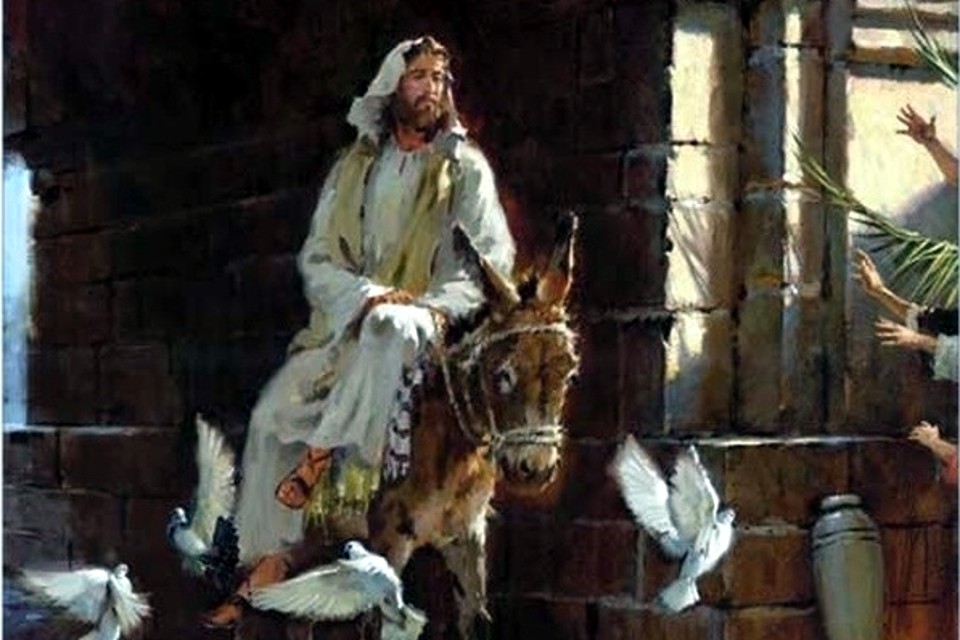 Jesus Entering Jerusalem on Donkey Painting by Brian Jekel
Jesus Entering Jerusalem on Donkey Painting by Brian Jekel
Joseph’s Donkey
My first visit to Europe was for a conference in Rome, which included a tour of Rome, Spain, and France. I still recall that our group size in the bus was ideal: it allowed us to have a chair in-between for hand carries and do away with the occasional inclusion – or should I say intrusion – of strangers practiced by some tour operators. For this, we were also given leeway for alternative routes while in Spain.
Among the unplanned stopovers was a medieval castle in Leyre, where our driver gave us time to enter and leisurely explore. While crossing the Pyrenees en route to France, having been told that almost everyone in the group has never experienced snow, he allowed us to get off the bus, take some pictures, and even play with snowballs.
There was one stop though that was particularly memorable. On our way to Torreciudad, I saw a farmer with a donkey along the road. Since I was seated right behind the driver, I pled with him to make a brief stop.
My fascination with donkeys must have come from an art history class that required me to compare them in pre-classic versus classical works of art. I observed that donkeys in Classical Greece were used primarily for riding and as beasts of burden.
On the other hand, donkeys in the Bible are symbols of service, peace, and humility. They are associated with the theme of wisdom in the Old Testament – as shown in the story of Balaam and the ass – and it was the animal chosen to accompany Jesus to Egypt and Jerusalem.
Either way, “on its own, the donkey would only make an ass of itself “ (Saint Josemaria Escriva), but it was the animal chosen to be a Throne.
This musing has led me to nurture my penchant for donkeys, why I love Shrek and his BFF, and why the presence of a donkey is a must in our Christmas Belen.
Rightly so since its presence figured in the rites of passage in Christ’s life: from birth to death. A donkey accompanied the search of Joseph for a decent place for Mary to give birth. Mary and the Christ Child rode this donkey during their flight to safety in Egypt. It also accompanied Christ on His way to Jerusalem.
Fools! For I also had my hour;
One far fierce hour and sweet:
There was a shout about my ears,
And palms before my feet.”
― G.K. Chesterton, The Donkey
But besides being the hearth of the manger and a messianic throne, it became a significant part of a household, accompanying Jesus and his parents in their ordinary affairs in Nazareth. Like every boy his age in the neighborhood, it could also have been a pet for the boy Jesus. Donkeys are full of character, versatile, and can have many uses for children: a ride, a companion animal, or simply a pet.
In places where donkeys thrive, it is common knowledge that getting one demands a long-term commitment; the average age of a donkey in the United Kingdom is 27, but they can live to over 40 years old. It was, indeed, possible that the donkey that accompanied Jesus in Bethlehem was the same donkey he played with in Nazareth and that later brought Him to Jerusalem. It must have been Joseph’s donkey all along.


No Comments